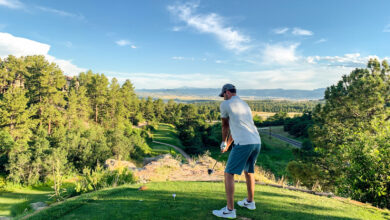How to Work on Your Shot Shape: Draws and Fades
If you’re an amateur golfer looking to elevate your game, learning how to shape your shots can be a game-changer. Mastering draws and fades not only adds variety to your game but can also help you navigate tricky course conditions. Let’s break down these two skills in a friendly and approachable way.
Understanding the Basics
First off, what exactly is a draw and a fade? Simply put, a draw is when the ball starts slightly right (for a right-handed golfer) and curves back to the left. A fade, on the other hand, starts left and curves to the right. Both shots can give you more control and precision, particularly when you need to avoid obstacles or position your ball for your next shot.
Why Shape Your Shots?
Shaping your shots can be incredibly beneficial. Imagine standing on the tee, facing a hole that doglegs right. If you can hit a draw, you’ll be able to get around that bend more easily. Conversely, if there’s a tree on the left, a fade can help you steer clear. Beyond just avoiding trouble, it adds an element of strategy to your game—it’s all about having options!
Getting Started with Draws
Let’s dive into how to hit a draw. The key is to adjust your stance and clubface alignment:
-
Stance: Align your feet slightly to the right of your target. This means aiming a bit more right than you usually would.
-
Clubface: Aim the clubface a little left of your feet. This sets up the necessary spin for the draw.
-
Swing Path: As you make your swing, ensure your path moves from inside to outside. You want to swing across your body slightly to promote that left curve.
A good drill is to practice hitting balls while focusing on this swing path. Start slow, and gradually add some speed as you get the hang of it. Remember, it’s about rhythm and control, not just power.
Mastering Fades
Now, let’s talk about fades. The process is similar but with a few tweaks:
-
Stance: Align your feet to the left of the target. Think of aiming down that left side.
-
Clubface: Position the clubface more aligned with your target. This will help promote a fade.
-
Swing Path: For the fade, your swing should move from outside to inside. This means swinging away from your body a bit more.
Again, practice makes perfect. Try hitting a few fades on the range, focusing on your alignment and swing path. It might feel a bit strange at first, but with some patience, you’ll get the hang of it.
Practical Drills
To solidify these skills, consider incorporating some simple drills into your practice:
-
Target Practice: Set up targets on the range, one for draws and one for fades. Work on hitting towards each target specifically.
-
Imaginary Course: Visualise a course layout in your mind and practise hitting different shots according to your imagined holes.
-
Video Your Swings: If you can, film your swings. It can offer some surprising insights into your mechanics and help you make necessary adjustments.
Summary
In conclusion, working on your shot shape can significantly improve your game. By learning to hit draws and fades, you equip yourself with the skills to tackle various course challenges. Remember to focus on your stance, clubface alignment, and swing path as you practise.
Keep things light and enjoy your time at the range or course. With a bit of patience and persistence, you’ll be shaping your shots like a pro in no time! Happy golfing!




